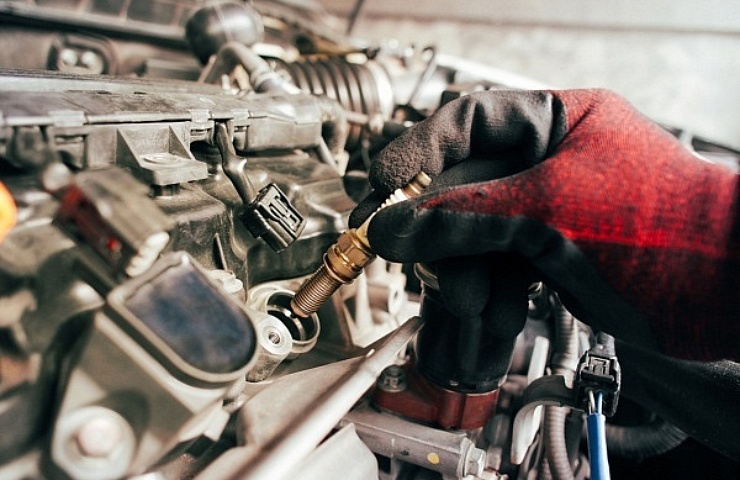Contents
How Often Should You Replace Spark Plugs?
Modern spark plugs can last up to 100,000 miles but gradually wear out over time. Carbon deposits may accumulate on the electrodes, or the electrode itself might start to burn out. If ignored too long, spark plugs can even seize inside the cylinder head—and removing a stuck plug can be challenging.
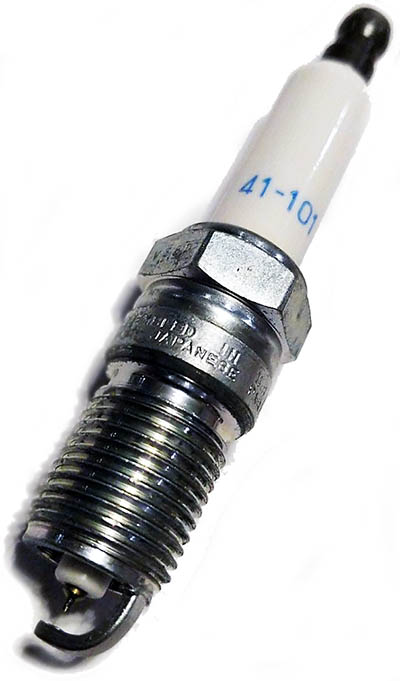
- Engine misfires or backfires
- Sudden decrease in gas mileage
- Poor acceleration
- Rough idling
- Trouble starting the engine
If one plug fails, replacing all the spark plugs is best. Taking a few minutes to replace a set of old spark plugs to prevent future problems is a no-brainer. (Read about the anatomy of spark plugs.)
Required tools:
- Ratchet socket wrench
- Extension bar
- Wobble extension
- Spark plug socket
- Spark plug wire pliers
- Spark gap gauge or feeler gauge
- Torque wrench
- Dielectric grease
Making the Change
A gasket-seat spark plug uses a crushable gasket (like a metal washer) that seals the plug to the cylinder head. When removing the old spark plug, ensure the old gasket is not stuck on the cylinder head. Likewise, verify that the new spark plug has the gasket in place before installation. The second style of spark plug uses a tapered seat, and the shell of the spark plug makes the seal against the cylinder head, so no gasket is needed.
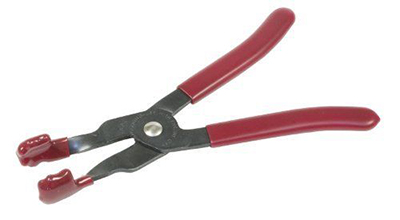
Spark-plug pliers
Start with a cold engine and a clean work area around the old spark plugs.
It’s best to work on one plug at a time to minimize the time the cylinder is without its spark plug and reduce the chance of mixing up the plug wires.
For older cars, spark plugs use plug wires that connect to a distributor, but for most cars built after 2000, spark plugs attach directly to a coil pack. Today’s cars usually have a plastic cover over the engine that must be removed to access the plugs.
Shop now for spark plugsThe Steps
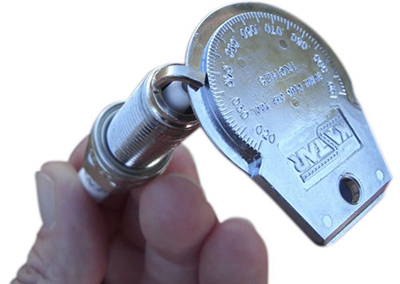
Spark gap gauge
- For older cars with spark plug wires, use a set of spark plug wire pliers to pull the plug wire off without damaging the connector boot. For newer vehicles with coil packs, disconnect the electrical connector by hand first and then gently twist the coil pack, lifting it straight up and out. Some coil packs are fastened to the valve cover with a screw, so take care not to lose the screw. Now would be a good time to check the wires for burned or cracked insulation. You can replace just the bad wire or change them all out.
- Now prepare the new spark plug. First, verify the spark plug gap with a gap or feeler gauge. Spark plugs are usually pre-gapped from the factory, but confirming the gap before installation is best.
- Unscrew and remove the old plug counterclockwise with your ratchet wrench, extension bar, and spark plug socket. You might need a wobble extension to reach the spark plug in difficult spots.
- Screw the new spark plug into your engine’s cylinder head by hand. Don’t cross-thread the plug—make sure it screws in easily. Tighten it down to the specifications using a torque wrench. Don’t over-tighten to prevent damage to the threads of the spark plug hole or the spark plug. To determine how much torque is needed, refer to the spark plug manufacturer’s website for recommended torque values and tightening techniques. (Read about using a torque wrench.)
- After installing the new plug, use a little dielectric grease to lubricate the spark plug wire boot or the coil pack O-ring gaskets and plug connector. The grease prevents misfires and makes it easier to remove the spark plug wire or coil pack in the future.
- Reinstall the plug wire or coil pack, reconnect the coil pack electrical connector, and repeat the process for the other spark plugs.
How Much Does it Cost to Replace Spark Plugs?
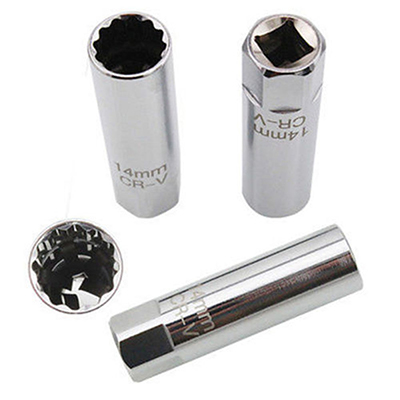
Spark-plug socket
There are many different types of spark plugs because each manufacturer optimizes the plugs’ design for use in its engines. A set of spark plugs should cost under $50 for most makes.
If a shop does the work, expect to pay for at least two hours of labor for spark plug replacement. When searching on eBay Motors, you should specify your year, make, and model to get the correct spark plugs.
Shop now for spark plugs
